 I recommend this article by , as a very useful and well-written guide to enjoying activism more. I think that he has identified a major problem and that his solutions can definitely help us. I found that as I read his article, I was applying them in my head and thinking, "Yes." (Candobetter.net editor.)
I recommend this article by , as a very useful and well-written guide to enjoying activism more. I think that he has identified a major problem and that his solutions can definitely help us. I found that as I read his article, I was applying them in my head and thinking, "Yes." (Candobetter.net editor.)
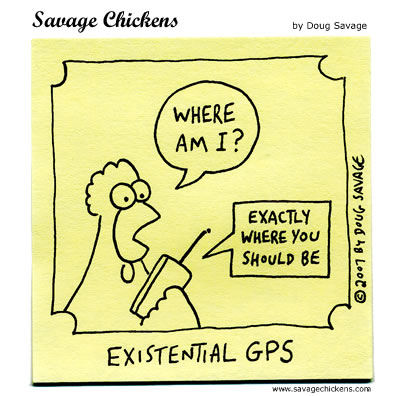 The cartoon by Doug Savage is copyright and comes from www.savagechickens.com.
The cartoon by Doug Savage is copyright and comes from www.savagechickens.com.
Some ideas about how we can reduce conflict among activists, create campaigns that are long lasting, reach out and connect with people who have different values to that of our own and work towards a meaningful shift in paradigm.
"The embrace of unconditional forgiveness is essential to the success of all the major activist adventures in the world. There may be truth in the savage denunciation of corrupt corporations, politicians, and a media in bed with what Robert Kennedy called 'systems of cold evil' that want to keep exploiting the earth. But this response has two main disadvantages in practical affairs: the excitement of projecting your own unacknowledged darkness onto others keeps you from seeing just how implicated you are. Advocating for any cause in this spirit virtually ensures your efforts will increase resistance rather than heal. Human beings will never be convinced to change their ways by other human beings who try to humiliate them. In nearly every case, such condemnation only reinforces the behaviour it is trying to end. When people are accused of acts they know they are guilty of by others who have contempt for them, they almost always retreat even further into their self-destructive behaviour. If they do change, it is from fear, or perhaps hypocrisy, but not from their own truth." (Andrew Harvey)
The version of the article that you are reading is very much a draft; something that I have put together for the 2018 Students of Sustainability Conference in Melbourne. While this is a work in progress (in fact it will always be a work in progress) the aim is to try, at the earliest possible opportunity, to encourage people to connect to the issues that are discussed here. If these words inspire only one person, then they have served their purpose.
Encouraging people other than myself to become involved at the onset is important because I am not exactly sure how this project will develop, only that it seems right for me to be doing this. In face of the overwhelming issues that the world is facing, it feels to me that we really have to evolve or accept a future that I don't want to think about. Of course many less privileged people than myself are already experiencing much of this dystopia right now. But I digress.....
At this stage I can say that the plan is to develop this movement by holding regular workshops and sometimes weekend retreats. Hopefully these workshops will inspire others to run workshops of their own with the movement spreading from there. This is the model that Climate for Change use and this seems to me to be the most effective way of developing a movement at this time.
So why have I found myself involved in Holistic Activism? As someone who has been an activist on and off since the 90's I have seen many activists burn out and much of that burnout is through dashed expectations, differences between activists and disappointment at seeing little positive change for the many hours of time that they have invested.
Of course I have witnessed some major successes and I am not in any way trying to denigrate the achievements that activists have made, only that, for every success, there seems to be a thousand more battles that need to be fought. We are mostly putting out spot fires and not putting enough emphasis into approaching the mindset that is creating these spot fires. This is why I have arrived at holistic activism.
It is an acknowledgment that most of the problems that plague humanity (and therefore the rest of the natural world) are rooted in our disconnection with all that is. If you feel this is too airy fairy, I urge you to read on. This movement utilises Deep Ecology, Acceptance Commitment Therapy, Social Permaculture and some aspects of Post Structuralism; all movements that have strong grounding in their own right. There is nothing much here that is new; just a repackaging of modern and ancient discourses in a way that is hopefully approachable to the modern day activist.
I am not trying to replace other forms of activism. This is about looking at how the activism that we are involved in can tap into deeper, more proactive, change. It could also provide another approach to effecting change for those who need to take a break from frontline activism.
What is an activist?
So considering that 'activism' is the second part of the title, the first question, I suppose, might be, what is an activist? I believe that every person is an activist (or potential activist) to a greater or lesser degree, even those who might not appear to fit the picture of what an activist is perceived to be. Everyone has a point whereby they would choose to go out and campaign, even if it is something as fundamental as ensuring that clean water is running out of their tap and that they have clean air to breathe. By seeing everyone as a potential activist, we start to pave a way towards looking for points of connection with others rather than getting bogged down in points of difference.
So this article is aimed at everyone because it assumes that everyone is a potential activist and it assumes that activism is something that is and should be ongoing. One thing that history has taught us is the need for constant vigilance or else we risk succumbing to the ideological posturing of those people who, over time, develop sufficient power and influence to favour a narrow view of the way the world should be.
Connecting
While language is a valuable tool, it also reduces and compartmentalises our complex relationship with the world and all that is. Therefore, to find a place of connection outside of language is as important as embracing critical thinking.
Indigenous tribes across the world have rituals in place to do just that. It is a means of ensuring that the impact of language is visualised from a deeper perspective. But those rituals have to be regular and ongoing in the same way that language is regular and ongoing. We have much to learn from such knowledges to ensure that the systemic change that we are working towards does not mutate into some kind of alternative dogma.
So as well as finding ways of reconnecting to the wonderment of the world, we could benefit immensely from learning to be the observers of our minds; to step back and realise that 'thoughts, images memories and other cognitions are nothing more than bits of language, words and picture.'
Holistic Activism Steps
Climate change and many of the other problems that are plaguing humanity and have plagued humanity are the symptoms of a much deeper problem, one that is rooted in ego and cognitive dissonance *.
Holistic Activism is about taking us outside of that because unless we do, we will never achieve long-term peace and sustainability. We have to stop re-arranging the deck chairs on the Titanic and embrace our interconnectedness and not our separateness. This movement is about taking an approach that deals with the causes as well as the underlying symptoms. Here is how:
Acceptance
The first step is acceptance. Our approach to activism and living must come from a perspective of acceptance of the way the world is in this moment; that for one reason or another, for better or worse, the world has unfolded to this point. Acceptance does not mean that we have to like it or not want to change it. Instead, acceptance is the starting point of that change. Otherwise we run the risk of becoming attached to discourses centred around what could have or what should have been. This leads to the politics of resentment and the emotional impact that comes with it. This of course does not mean that we should condone past actions or activities. On the contrary, it is about maintaining a critical eye so that we do not repeat those mistakes. The notion of acceptance is about breaking the endless cycle of recrimination and moving towards an activism that is centred on compassion.
De-escalation
This brings me to the second step which is about de-escalation. Every person brings with them the many layers of their life experience into conversation; they are that way as a result of many factors and influences that stretch back to long before they were born. By not basing our assumptions on there being a healthy normality, we can look towards those issues that connect us as opposed to focussing on the ones that divide us. In doing so we can build up the trust that is required to have open and constructive conversation on those issues where we do have differences. This doesn't mean that we shouldn't be assertive and show boundaries. In fact it is important that we do, only that this assertiveness is underlined by compassion.
Maintaining critical thinking capacity
The third step is to maintain our own capacity to think critically, coupled with a willingness to change our perspective. No one person can have a clear view of the way the world should be. We can have ideas but we must feel that we are part of an ongoing conversation and that the outcome of that conversation will never be exactly what we envision. It will be much more complex and multi layered. Knowing this gives us the freedom to be open to new ideas and to be willing to change our perspective, thus creating a more conducive atmosphere for everyone to create meaningful change.
Empathy and open-mindedness
The fourth step is to realise that creating social inclusion and ecological sustainability is not about everyone adhering to the same set of values. Instead we need to look for areas of connection. We achieve this by trying to see things from the perspective of someone else and looking for areas where that connection can be made. This starts to take the relationship out of ego and begins the process of developing a relationship that is considerably more open minded.
The fifth step is being comfortable with paradoxes. This is a key aspect of not getting caught-up in cognitive dissonance. The world is a complex place and there are many truths that seem conflicting but have their place. We try to draw lines around our perspective of the world and make a box out of it and then defend what lies in that box. We also run the risk of breaking the world into dichotomies which ignores the complexities that can make a real difference.
The sixth step is to take a permaculture approach to the way we communicate. Observe a situation before choosing your role within it. Work out where we can work together and determine the most effective role that you can play.
The seventh step is to utilise assertive communication techniques as well as reflecting listening in order to most effectively engage with the previous six steps.
Final Thoughts
Thank you again reading this very brief introduction. If you connect with even some of what is written here, it would be great to hear from you and it would be great to hear your thoughts and opinions.
A more in-depth version of this article will, in time, be published as a booklet and this in turn, will accompany workshops and regular meet-ups. I have no idea what impact this movement will have, but this is where I have arrived at and where I feel that I can now make the best contribution.
NOTES
* cognitive dissonance is when people hold a core belief that is very strong. When they are presented with evidence that works against that belief, the new evidence cannot be accepted. It would create a feeling that is extremely uncomfortable, called cognitive dissonance. And because it is so important to protect the core belief, they will rationalise, ignore even deny anything that doesn't fit in with the core belief.

 Following the WA Government’s reckless decision to approve South32’s bauxite mine expansion last year, Federal Environment Minister Tanya Plibersek has chosen to greenlight South32’s massive bauxite expansion in the Northern Jarrah Forest, near Boddington. Join us from 8.30am to 9:30 on Wednesday 19 Feb to protest this dangerous extension outside South32’s Perth/Boorloo headquarters, on William Street.
Following the WA Government’s reckless decision to approve South32’s bauxite mine expansion last year, Federal Environment Minister Tanya Plibersek has chosen to greenlight South32’s massive bauxite expansion in the Northern Jarrah Forest, near Boddington. Join us from 8.30am to 9:30 on Wednesday 19 Feb to protest this dangerous extension outside South32’s Perth/Boorloo headquarters, on William Street.

 Guest speakers: Scott Breschkin Marine Conservation Officer with The Nature Conservancy Australia and Josh Davis, Pesticide Action Australia, on pesticide use in coastal reserves around Port Phillip Bay.
Guest speakers: Scott Breschkin Marine Conservation Officer with The Nature Conservancy Australia and Josh Davis, Pesticide Action Australia, on pesticide use in coastal reserves around Port Phillip Bay. The Queensland government faces the voters every 4 years on the last Saturday of October; this year it’s the 27th. What are the issues? Our two-party system offers up a smorgasbord of options. The Laberal duopoly are truly diligent in their effort to identify their differences at election time. Given how studiously they avoid addressing the underlying causes of our most pressing issues, they are to be congratulated for fooling as many people as they do that there’s a choice.
The Queensland government faces the voters every 4 years on the last Saturday of October; this year it’s the 27th. What are the issues? Our two-party system offers up a smorgasbord of options. The Laberal duopoly are truly diligent in their effort to identify their differences at election time. Given how studiously they avoid addressing the underlying causes of our most pressing issues, they are to be congratulated for fooling as many people as they do that there’s a choice. The property development and construction industry is having a lend of Australia: By promoting massive migration numbers, it keeps housing and land costs high and it keeps its own costs low.
The property development and construction industry is having a lend of Australia: By promoting massive migration numbers, it keeps housing and land costs high and it keeps its own costs low.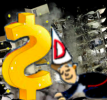 The 100 years from 1870 is described as the innovation century in which there more more inventions, starting coincidentally with the light bulb, than in the rest of mankind's history. For the most part their roll out into society was slow enough to dampen the impact of the invention, electricity wasn't connected fully in Australia until 1989. But for me there was one event that stood out and that occurred on on the 4th of October 1957 just before my birthday.
The 100 years from 1870 is described as the innovation century in which there more more inventions, starting coincidentally with the light bulb, than in the rest of mankind's history. For the most part their roll out into society was slow enough to dampen the impact of the invention, electricity wasn't connected fully in Australia until 1989. But for me there was one event that stood out and that occurred on on the 4th of October 1957 just before my birthday.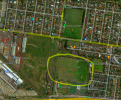 The CFMEU has placed a green ban on a proposed site of an indoor sports stadium at McIver Reserve in Yarraville that will reduce the provision and access to open space for the local community. McIver Reserve is a key community hub for recreation and leisure. The proposed reduction of open space in a council with already limited provision of open space shows a lack of regard to the views of local residents by Council.
The CFMEU has placed a green ban on a proposed site of an indoor sports stadium at McIver Reserve in Yarraville that will reduce the provision and access to open space for the local community. McIver Reserve is a key community hub for recreation and leisure. The proposed reduction of open space in a council with already limited provision of open space shows a lack of regard to the views of local residents by Council. The following message about shocking proposals for a wall of multistorey appartments on the fragile banks of Frankston's much-loved Kananook Creek, was sent on 12 January 2023 to members and friends of The Port Phillip Conservation Council.
The following message about shocking proposals for a wall of multistorey appartments on the fragile banks of Frankston's much-loved Kananook Creek, was sent on 12 January 2023 to members and friends of The Port Phillip Conservation Council. "To date, I understand that 2,268 jurisdictions in 39 countries have declared a climate emergency. It is the one issue about which there is widespread global consensus. It presents a common threat to all countries and no country can isolate itself from it. However, to effectively tackle climate change, there must be an equal focus on population growth and the disastrous effect it is having on the earth's natural environment. To date, there is little evidence of governments doing that.
"To date, I understand that 2,268 jurisdictions in 39 countries have declared a climate emergency. It is the one issue about which there is widespread global consensus. It presents a common threat to all countries and no country can isolate itself from it. However, to effectively tackle climate change, there must be an equal focus on population growth and the disastrous effect it is having on the earth's natural environment. To date, there is little evidence of governments doing that. Report headlines: Heritage Protection Forum planned; Federal Election; The Committee that ate Melbourne (The Melbourne Committee); Wattle Park Heritage Submissions sought; Curtin Hotel; Kilmore Land Deal; Crowag Green Notices; South East Water Reservoir, Mt Eliza; Heritage Victoria Permit Application for 2022 Melbourne International Flower and Garden Show; Ivanhoe Developer goes direct to Planning Minister; Queen Victoria Market; Big End of Town Complaints Department; High-rise A
Report headlines: Heritage Protection Forum planned; Federal Election; The Committee that ate Melbourne (The Melbourne Committee); Wattle Park Heritage Submissions sought; Curtin Hotel; Kilmore Land Deal; Crowag Green Notices; South East Water Reservoir, Mt Eliza; Heritage Victoria Permit Application for 2022 Melbourne International Flower and Garden Show; Ivanhoe Developer goes direct to Planning Minister; Queen Victoria Market; Big End of Town Complaints Department; High-rise A Most of us will remember the second pandemic year of 2021 more with regret or anger than fondness. For the nature lovers among us, its closing days delivered a triple whammy, for they also proved to be the closing hours in the lives of three venerable conservation champions of international renown whom we had long revered. By sheer coincidence, Thomas Lovejoy, E. O.
Most of us will remember the second pandemic year of 2021 more with regret or anger than fondness. For the nature lovers among us, its closing days delivered a triple whammy, for they also proved to be the closing hours in the lives of three venerable conservation champions of international renown whom we had long revered. By sheer coincidence, Thomas Lovejoy, E. O. Sustainable Population Australia (SPA) believes there is nothing to fear from the downward projection of population size in the Inter-Generational Report (IGR) from 40 million to 38.8 million by 2061. National President Jenny Goldie says what is to be feared are the environmental, social and economic cost of adding another 13 million people to the population.
Sustainable Population Australia (SPA) believes there is nothing to fear from the downward projection of population size in the Inter-Generational Report (IGR) from 40 million to 38.8 million by 2061. National President Jenny Goldie says what is to be feared are the environmental, social and economic cost of adding another 13 million people to the population. I think it is timely to highlight the fact that HRH Duke of Edinburgh appears to have had a pretty good understanding of environmental issues and the role of human population numbers in environmental degradation.[1] His reputation for having a curmudgeonly persona went before him, and possibly gave him licence to blurt out his thoughts, uncensored by notions of political correctness. His gratuitous remarks to more or less strangers, regarding their appearances, or rude questions, characterised his multitudinous "gaffes". He was refreshingly "un careful" and honest in interviews, so he spoke of what many refer to as "the elephant in the room" - human population numbers - as though this reality was indeed not only visible but very obvious.[2] He remarked in one interview that where humans are, there is nothing else (!) He was unmeasured in his comments, so his message was clear. He also remarked, in one interview, that no-one wants to talk about it [population]. I have not, so far, found an interview where any interviewer delves deeply into this with him.
I think it is timely to highlight the fact that HRH Duke of Edinburgh appears to have had a pretty good understanding of environmental issues and the role of human population numbers in environmental degradation.[1] His reputation for having a curmudgeonly persona went before him, and possibly gave him licence to blurt out his thoughts, uncensored by notions of political correctness. His gratuitous remarks to more or less strangers, regarding their appearances, or rude questions, characterised his multitudinous "gaffes". He was refreshingly "un careful" and honest in interviews, so he spoke of what many refer to as "the elephant in the room" - human population numbers - as though this reality was indeed not only visible but very obvious.[2] He remarked in one interview that where humans are, there is nothing else (!) He was unmeasured in his comments, so his message was clear. He also remarked, in one interview, that no-one wants to talk about it [population]. I have not, so far, found an interview where any interviewer delves deeply into this with him.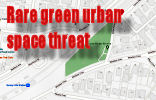 The Level Crossing Removal Authority (LXRA) current design for the new railway station will permanently occupy a significant part of the Lorne Parade Reserve at the expense of open public parkland.
The Level Crossing Removal Authority (LXRA) current design for the new railway station will permanently occupy a significant part of the Lorne Parade Reserve at the expense of open public parkland.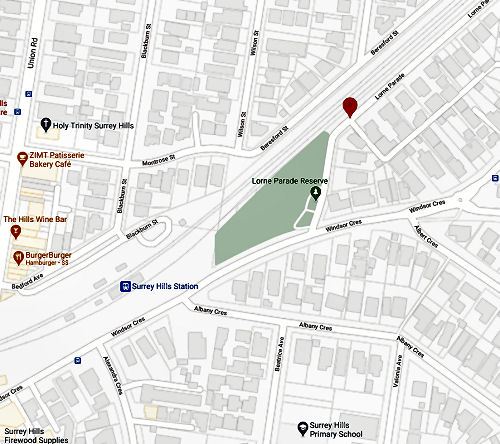
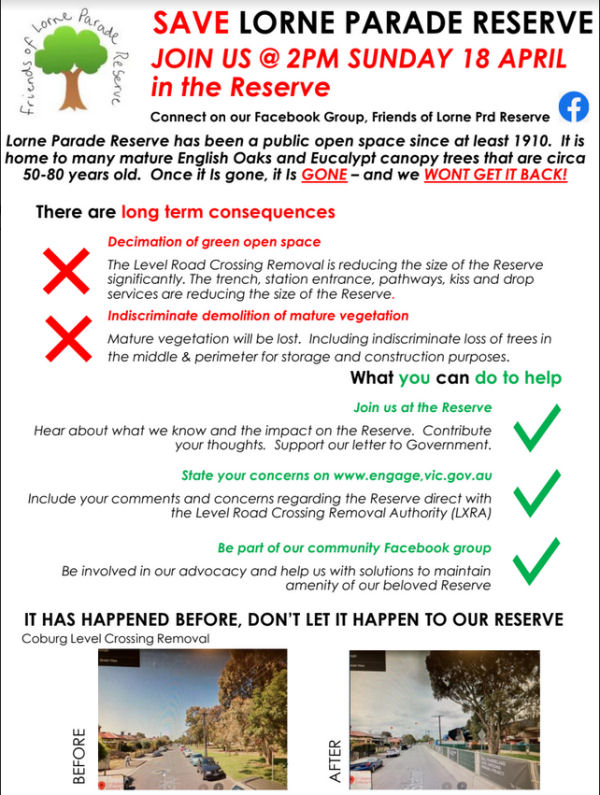
 The draft Yarra Strategic Plan claims to deliver the first Victorian integrated river corridor strategy and to identify immediate actions for the river corridor, enabling long-term collaborative management between agencies and Traditional Owners. It is intended to guide local planning. We publish here a critical submission to this draft plan. Summary of submission by candobetter editor: Climate Change and human failure to interact safely with the natural world. Plan fails to adequately factor in transport interaction with Yarra. Lack of proper transport interconnectivity. Higher density depends on high quality public transport. Private car still dominates. Forecast population growth and new constructions will inevitably cause major environmental damage. North-East Link Freeway will comport massive land-fill problems, hardly referred to in Draft Plan. Likely potential for destabilisation of groundwater in the Yarra Valley in the Bulleen and Rosanna area as a consequence of the North-East Link Freeway project. Substantial areas of public open space is threatened by the project, together with about 25,000 mature canopy trees. Adverse human health effects of the project would include increased air pollution and heightened road noise. Lack of cycling provision on roads in cities of Boroondara, Banyule, Manningham and Maroondah and the Shires of Nillumbik and Yarra Ranges. Proposal in Plan to increase lanes capacity on the Eastern Freeway to cater for the North East Link project by over 40%, from 802,000 square metres to 1,127,000 square metres. Adverse environmental effects would include increased run-off of polluted stormwater into the Yarra River and elevated ambient temperatures as a consequence of the large increase in concrete and asphalt surfaces. Report of the Commissioner of Sustainability, State of the Yarra and its Parklands (2018), concluded that the status of the Yarra river was poor for 18 of its 25 environmental indicators. This can only deteriorate if planned stressors go ahead.
The draft Yarra Strategic Plan claims to deliver the first Victorian integrated river corridor strategy and to identify immediate actions for the river corridor, enabling long-term collaborative management between agencies and Traditional Owners. It is intended to guide local planning. We publish here a critical submission to this draft plan. Summary of submission by candobetter editor: Climate Change and human failure to interact safely with the natural world. Plan fails to adequately factor in transport interaction with Yarra. Lack of proper transport interconnectivity. Higher density depends on high quality public transport. Private car still dominates. Forecast population growth and new constructions will inevitably cause major environmental damage. North-East Link Freeway will comport massive land-fill problems, hardly referred to in Draft Plan. Likely potential for destabilisation of groundwater in the Yarra Valley in the Bulleen and Rosanna area as a consequence of the North-East Link Freeway project. Substantial areas of public open space is threatened by the project, together with about 25,000 mature canopy trees. Adverse human health effects of the project would include increased air pollution and heightened road noise. Lack of cycling provision on roads in cities of Boroondara, Banyule, Manningham and Maroondah and the Shires of Nillumbik and Yarra Ranges. Proposal in Plan to increase lanes capacity on the Eastern Freeway to cater for the North East Link project by over 40%, from 802,000 square metres to 1,127,000 square metres. Adverse environmental effects would include increased run-off of polluted stormwater into the Yarra River and elevated ambient temperatures as a consequence of the large increase in concrete and asphalt surfaces. Report of the Commissioner of Sustainability, State of the Yarra and its Parklands (2018), concluded that the status of the Yarra river was poor for 18 of its 25 environmental indicators. This can only deteriorate if planned stressors go ahead.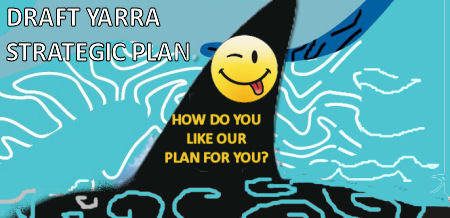
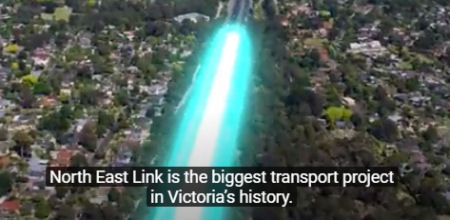
 It has been great to re-live the Apollo 11 Moon Landing’s 50 th Anniversary. What a monumental achievement and tribute to human intellectual candlepower, endeavour and above all courage. I was a Year 9 student at the time; like other classes we downed tools to watch it unfold. Our teachers were just as astonished by the audacity and precision of the Landing as we were. I – and I think most of the people who I talked with or heard from at that time – had a very rosy view of the future. Yes we were involved in a stupid war in Vietnam, but I thought the Second World War and the Holocaust were so wicked and so evil that we’d learned from that, and that there was a very strong worldwide appetite for peace. I thought that war and conflict would become a thing of the past.
It has been great to re-live the Apollo 11 Moon Landing’s 50 th Anniversary. What a monumental achievement and tribute to human intellectual candlepower, endeavour and above all courage. I was a Year 9 student at the time; like other classes we downed tools to watch it unfold. Our teachers were just as astonished by the audacity and precision of the Landing as we were. I – and I think most of the people who I talked with or heard from at that time – had a very rosy view of the future. Yes we were involved in a stupid war in Vietnam, but I thought the Second World War and the Holocaust were so wicked and so evil that we’d learned from that, and that there was a very strong worldwide appetite for peace. I thought that war and conflict would become a thing of the past.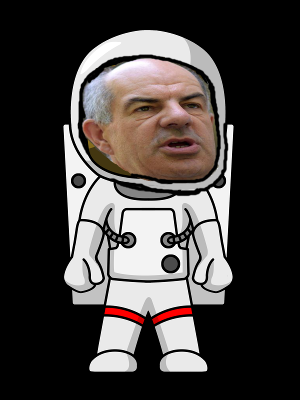
 Dingoes play a key role in the conservation of Australian outback ecosystems by suppressing feral cat populations, a UNSW Sydney study has found. A UNSW Sydney study has ended an argument about whether or not dingoes have an effect on feral cat populations in the outback, finding that the wild dogs do indeed keep the wild cat numbers down.
Dingoes play a key role in the conservation of Australian outback ecosystems by suppressing feral cat populations, a UNSW Sydney study has found. A UNSW Sydney study has ended an argument about whether or not dingoes have an effect on feral cat populations in the outback, finding that the wild dogs do indeed keep the wild cat numbers down.
 In this 1973 video, the Club of Rome envision a world with far less need to work long hours and with a benign system of international cooperation. I think that they would be horrified if they could see what has actually happened, and the role that the IMF has taken. I think the Club of Rome got the material settings right, though.
In this 1973 video, the Club of Rome envision a world with far less need to work long hours and with a benign system of international cooperation. I think that they would be horrified if they could see what has actually happened, and the role that the IMF has taken. I think the Club of Rome got the material settings right, though.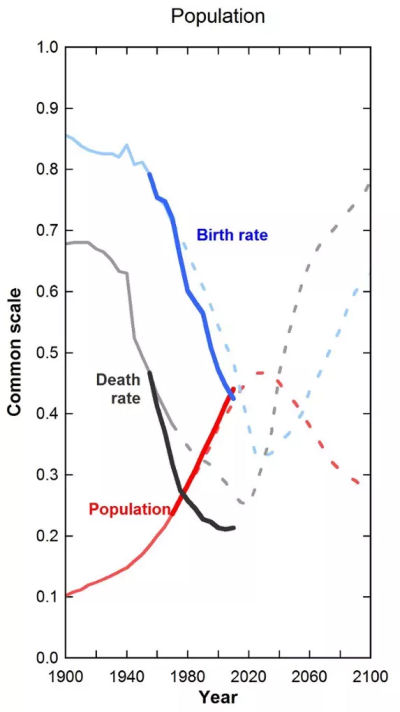
 A recent interview of the Prime Minister by Leigh Sales in the 7.30 Report on Tuesday 29 January 2019 provided a good illustration of the lack of understanding of economics by ABC journos or their deliberate and calculated rejection of some simple truths. John Coulter has written to Leigh Sales as follows.
A recent interview of the Prime Minister by Leigh Sales in the 7.30 Report on Tuesday 29 January 2019 provided a good illustration of the lack of understanding of economics by ABC journos or their deliberate and calculated rejection of some simple truths. John Coulter has written to Leigh Sales as follows.  Inside is an English translation of the French Yellow Vests' manifesto
Inside is an English translation of the French Yellow Vests' manifesto 
 "Media resistance has always been one of the big problems," says Sandra Kanck, who came from a family where there were seven children and she learned early that one wage did not go as far for seven as it might for fewer. From 1994-2009 Sandra served as an Australian Democrats’ Member of the upper house of the South Australian Parliament. Her ‘maiden’ speech in parliament was – predictably for those who know her – about population. For more than nine years Sandra Kanck has been either President or Vice-President of SPA, mostly the former, including reluctantly juggling the role of Acting Treasurer for three months during one of her stints as President.
"Media resistance has always been one of the big problems," says Sandra Kanck, who came from a family where there were seven children and she learned early that one wage did not go as far for seven as it might for fewer. From 1994-2009 Sandra served as an Australian Democrats’ Member of the upper house of the South Australian Parliament. Her ‘maiden’ speech in parliament was – predictably for those who know her – about population. For more than nine years Sandra Kanck has been either President or Vice-President of SPA, mostly the former, including reluctantly juggling the role of Acting Treasurer for three months during one of her stints as President.  I recommend this article by
I recommend this article by  The cartoon by Doug Savage is copyright and comes from www.savagechickens.com.
The cartoon by Doug Savage is copyright and comes from www.savagechickens.com. I note that the ABC is planning to air Four Corners and Q&A programs on the issue of population and a ‘Big Australia’. The topic of a ‘Big Australia’ is a contentious issue in public debate. Several opinion polls show more than 50 percent of Australians believe Australia has enough people or should not grow any larger than 30 million people. On the other hand, the major political parties (including the Greens) are in lockstep marching to the tune of a Big Australia. Thus there is a major gap between elite opinion and the general public. In view of this the ABC has a special responsibility to ensure that its Editorial Policy number 4 — Impartiality and Diversity of Perspectives — is fully achieved in this case.
I note that the ABC is planning to air Four Corners and Q&A programs on the issue of population and a ‘Big Australia’. The topic of a ‘Big Australia’ is a contentious issue in public debate. Several opinion polls show more than 50 percent of Australians believe Australia has enough people or should not grow any larger than 30 million people. On the other hand, the major political parties (including the Greens) are in lockstep marching to the tune of a Big Australia. Thus there is a major gap between elite opinion and the general public. In view of this the ABC has a special responsibility to ensure that its Editorial Policy number 4 — Impartiality and Diversity of Perspectives — is fully achieved in this case.
Recent comments